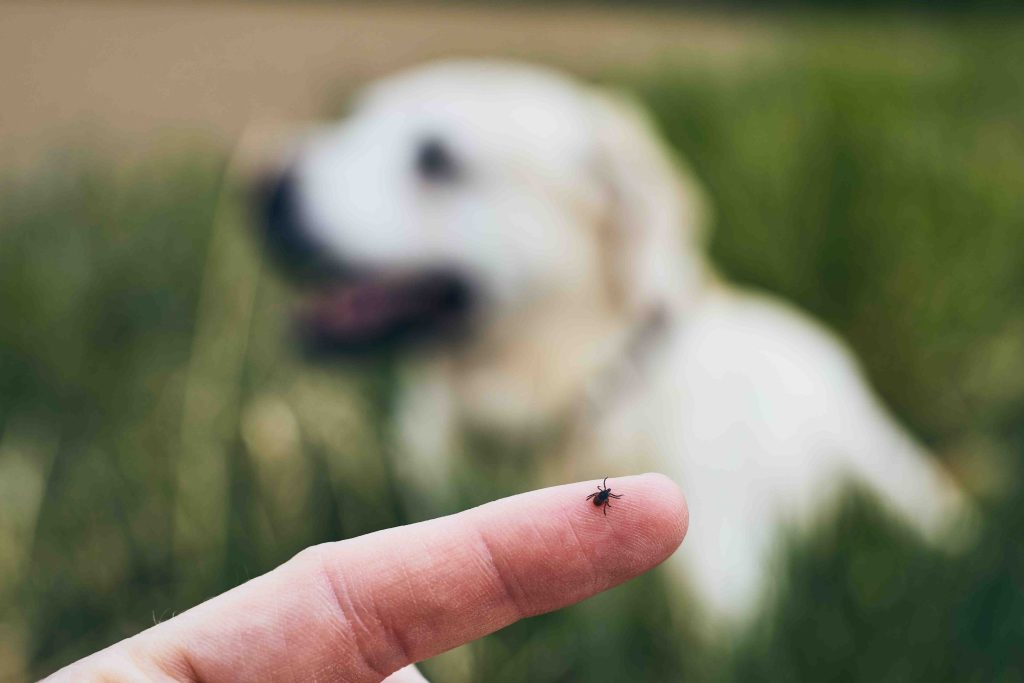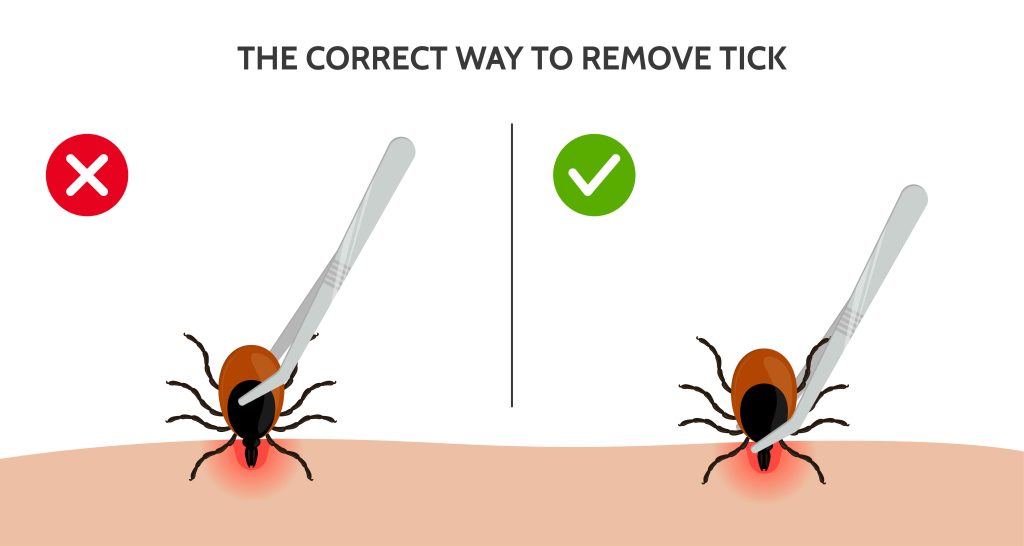Ticks, the nightmare of almost any pet owner. These tiny little parasitic arachnids are 3 to 5 mm in length depending on age, species, sex, and how full they are. Ticks will attach themselves to the skin of the host, and live by feeding on the blood of birds, mammals, and in some cases, amphibians and reptiles. Ticks are vectors for disease transmission, and tick-borne diseases are common. There are approximately 850 different species of ticks worldwide.

Life cycle of the tick
Ticks can live up to 2 to 3 years and will go through four main life stages. Which are the egg, six-legged larvae, eight-legged nymph, and adult. The soft tick will go through several extra nymph stages.
Egg
Female ticks can lay 3000-7000 eggs. They are unable to lay eggs on their host and will often find a warm and covered place to lay their eggs, like leaf litter. Depending on the weather, after 2 weeks to 2 months, the tick eggs hatch and the six-legged larvae are born.
Larvae
Once the eggs hatch and the larvae are born, they will start looking for their first blood meal. Ticks can’t jump, so they will find elevated spots to climb on, like grass, where they will wait till a host passes by and they can climb on.
During the larvae stage, ticks will usually search for small hosts, like rodents, and while feeding on these hosts, can pick up infections if their host is infected. Once a tick feeds on an infected host, they will remain infectious for the rest of their life cycle. The larvae of ticks are minuscule and will usually go unnoticed by many people. Ticks in the larvae stage can already spread tick-borne diseases. After their first meal, the tick will fall off the host, moult, and evolve into a nymph.
Nymph
After moulting, the six-legged larvae will evolve into an eight-legged nymph and will start searching for a new host to feed on. Soft ticks will go through the nymph stage two to five times. While feeding on their host, nymphs can infect them with tick-borne diseases they either picked up during the larvae stage, or with certain diseases, are born with due to an infected mother.
Adult
Once the tick is an adult, it will search for its last host. After this last feed, they will typically mate. The male tick will die shortly after mating, while the female will die after laying her eggs. If a tick can’t find a new host, its life cycle will end.
Tick-borne diseases in our pets
Our pets are sadly not immune to tick-borne diseases, and just like humans can get infected with diseases through a tick bite. Depending on your location, certain tick-borne diseases will be more common than others. In the UAE, Ehrlichiosis is seen commonly in pets, and also Anaplasmosis and Babesiosis are seen. Other tick-borne diseases that can affect pets are Lyme disease, Rocky Mountain Spotted Fever, Bartonellosis, and Hepatozoonosis. Tick-borne diseases often go unnoticed by owners until they are severe. All of these diseases will have serious health consequences for your pet.
Ehrlichiosis
This tick-borne disease exists worldwide, and the UAE is no exception. Transmitted through the bite of an infected brown dog tick, our pets, and humans alike, can become infected with Ehrlichiosis. The disease can’t spread from pet to human, or human to pet, but only through the bite of an infected tick. Ehrlichiosis has three stages: acute, subclinical, and chronic. While some dogs get infected and never get sick, for others the infection will end up being fatal.
Symptoms will usually start between 1 and 4 weeks after the bite, and can include fever, stiffness, edema of the limbs, coughing, depression, loss of appetite, runny eyes and/or nose, bloody noses, enlarged lymph nodes and respiratory problems. In some cases, pets may seem to appear to recover from their symptoms but enter a chronic state of the illness in which blood cells get damaged resulting in potential serious complications. Pets that are in the subclinical stage will show no symptoms at all. The chronic stage can occur months, to years, after the initial infection. The symptoms will be similar to those of the acute infection, but more severe.
Babesiosis
Just like Ehrlichiosis, Babesioses is seen globally. Infection can happen in animals and humans through the bite of an infected tick. Babesioses has an incubation period from 2 to 4 weeks, but symptoms might arise as late as 2 months after the bite. Ticks that can transmit this disease are the brown tick and dog tick. Symptoms are usually severe, including lethargy, pale gums, rapid heartbeat, rapid breathing, muscle tremors, depression, weakness, dark urine, swollen lymph nodes and fever.
Anaplasmosis
Also referred to as ‘dog fever’ or ‘dog tick fever’, Anaplasmosis is a tick-borne illness that is more commonly in dogs and humans, but cats can contract the disease in rare cases. Symptoms usually develop within days, to two weeks, after the bite and can include: fever, lethargy, loss of appetite, limping, stiffness, painful joints, enlarged lymph nodes. In some cases, vomiting, diarrhea and coughing is seen. Some pets might show only one or two symptoms when they first become infected, or no symptoms at all. Anaplasmosis that is left untreated, can result in serious health complications including bleeding and respiratory issues and organ failure.
Prevention
After every dog walk, thoroughly check your pet for ticks, especially if you have been walking in a spot which is known to have ticks (e.g., grassy areas etc.). As ticks in their larvae and nymph stage can be very small and hard to spot in dense fur, some people like to feel and look while checking for ticks. It’s also advised to daily check pets for ticks that have outdoor access.

You can either use natural or chemical preventative measurements. Which to choose is a personal choice, and will depend on the severity of the situation, preference of the owner, and pet. While some chemical applications like Bravecto will be very effective, in rare cases they may have side effects, so make sure to research well. It’s important to keep checking for ticks even if you take preventative measurements, as even with preventative measurements ticks might attach themselves to your pet. If you have an infestation in your home, pest control will need to come and treat your house, as ticks can crawl in the tiniest places and live for months even if they didn’t feed.
If you spot an attached tick, remove the tick by using either tweezers or a tick removal hook. Make sure that you remove the tick fully by grasping the tick as close to the skin as possible. After that, pull upward. Clean the bite area and wash your hands. You can note down the date of the removal of the tick as some tick-borne diseases take time to develop.
Never smother the tick with soap or alcohol when attached to your pet. Also, don’t hold a lighter under it, or do anything else that could upset the tick. This is because they might regurgitate and release infected material into your pet infecting them with a tick-borne disease.

Conclusion
Ticks, the nightmare of many pet owners. Through this article we hope to have informed pet owners about the life cycle of the tick, how they can protect their pet, and how to recognize common tick-borne diseases so intervention can happen at the first signs of illness.
Would you like to know more about our pet care services, feel free to contact us. Our team will be happy to help.

